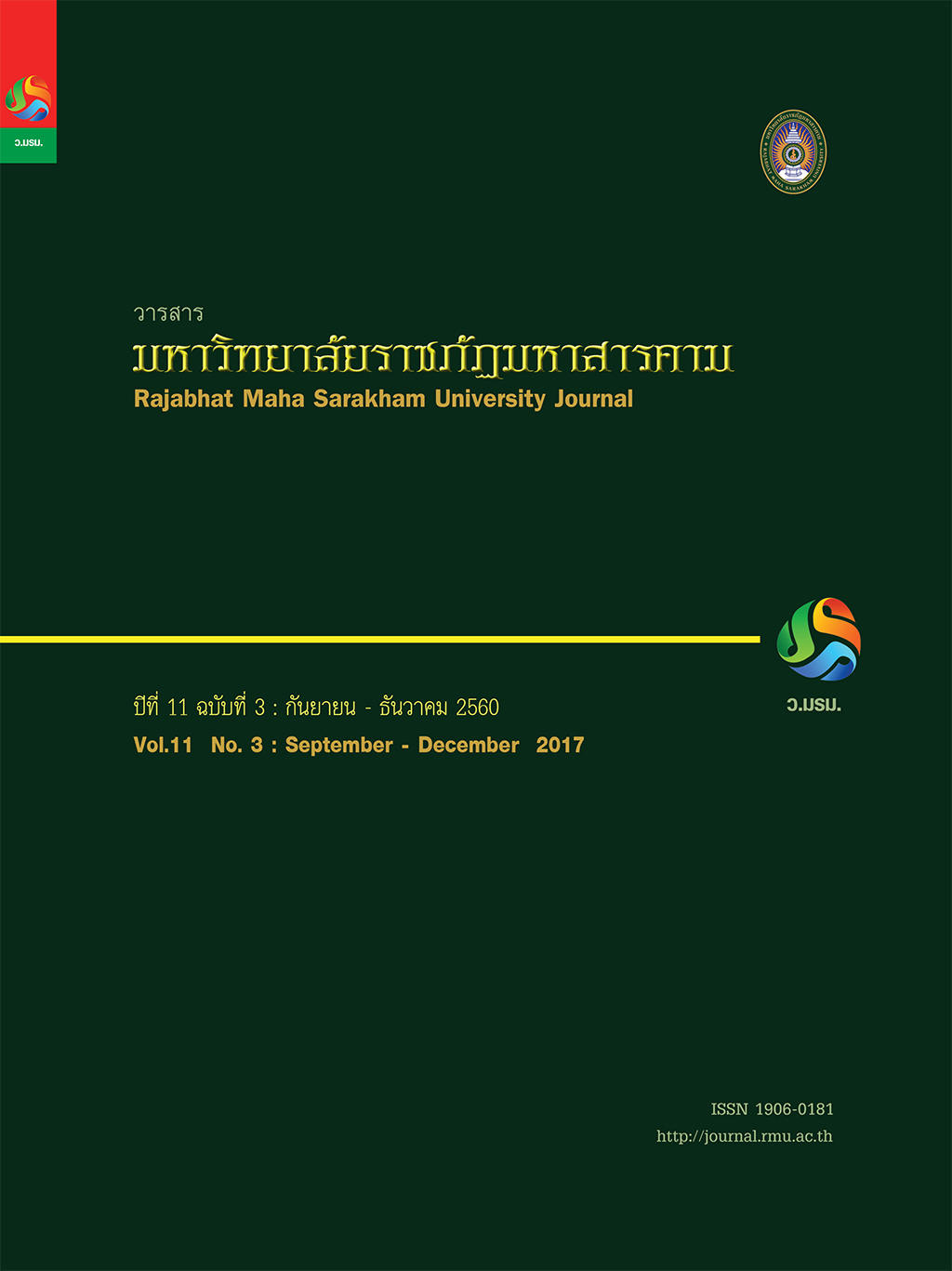An Analysis of Operational Efficiency of Listed Companies in the Stock Exchangeof Thailand by Data Envelopment Analysis : A Case Study of Health Care Services Sector
Main Article Content
Abstract
The purpose of this research was to identify the operational efficiency of listed companies in the Stock
Exchange of Thailand of Health Care Services Sector for 15 companies from Annual Report 2015 of listed
companies in the Stock Exchange of Thailand. The DataEnvelopment Analysis (DEA) and Input Oriented
model are used to calculate efficiency scores. The findings showed that listed companies in the Stock Exchange
of Thailand of Health Care Services Sector for 3 companies or 20.00 percent of all 15 companies had
operational efficiency. Average efficiency scores based on CRS and VRS assumption were 0.451 and 0.547
and average scale efficiency was 0.683 .
Article Details
1. All articles undergo a thorough with at least three reviewers evaluating their suitability within the respective field of study, during the double-blind review.
2. The views expressed by individual authors do not represent the official views of the Editorial Boards of RMUJ: The author of each articie is responsible for all its contents.
3. The Editorial Boards do not reserve the copyrights. but proper citations need to be made.
References
Evaluation of operations by DEA method : a case
study of Thai Credit Guarantee Corporation.
Thesis, Faculty of Economics, Ramkhamhaeng
University.
[2] Zthapongpakdee, Piyanuj. (2016). “Business/
industry trends in 2016-2018, private hospital”,
Krungsri Research Paper.June.
[3] Wuttirakkhajon, Natthapon. (2017). “Industry
Update, private hospital”. Paper of the Service
Economic Sector Unit, the Government Savings
Bank. May.
[4] M, Mister. (2013). Stocks Analysis of Thai
hospital VI. Bangkok : Dream & Passion.
[5] Seubpongsakorn, Auttapol .(2012). “The methodology
of Data Envelopment Analysis (DEA) and Measuring
TechnicalEfficiency”. CMU Journal of Economics,
16(1) : 43-82.
[6] Untong, Akarapong. (2004). The Manual of DEAP
2.1 for Efficiency Analysis by Data Envelopment
Analysis. Chiang Mai : Social ResearchInstitute,
Chiang Mai University.
[7] Banker, R.D; Charnes, A. and Cooper W.W. (1984).
“Models for Estimating of Technical and Scale
inEfficiencies in Data Envelopment Analysis”,
Management Science. 30 : 1678-1692.
[8] Charnes, A., Cooper, W.W and Rhodes,E. (1978).
“Measuring theEfficiency of Decision Making Unit”.
European Journal of Operational Research, 2(6),
429-444.
[9] Charnes A, Cooper, W.W., Lewin, A.Y and
Seiford,L.M. (1994). Data Envelopment Analysis:
Theory, Methodology and Application. Boston :
Kluwer Academic Publishers.
[10] Coelli, Timothy J., Rao, D.S. Prasada.; O’Donnel. ;
Cristopher J. and Battese, George.E. (1998). An
Introduction to Efficiency and Productivity
Analysis. Boston : Kluwer Academic Publishers.
[11] Farrell,M.J. (1957). The measurement of
ProductiveEfficiency. Journal of the Royal
Statistical Society, A(120), 253-290.


